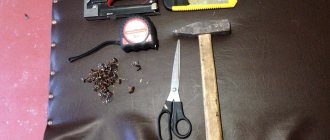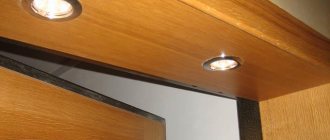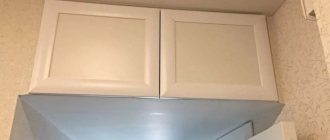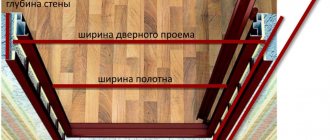In order for passage into the house to be convenient and also to fulfill all its functions, many conditions must be met. And in some cases, the level of livability of a home is determined by a small detail - the threshold for the front door. This element is multifunctional and is needed not only for decoration. There are many practical purposes hidden in the step in front of the door.
“Smart threshold” - pros and cons
Unlike the classic one, the automatic threshold does not have such disadvantages as the risk of injury and rapid wear.
At the same time, the design performs the remaining protective functions (protection from noise and wind, heat retention, a reliable barrier to steam and odors) at the proper level. The design of the automatic threshold provides a modern level of comfort when using interior doors and has the following advantages:
- It perfectly retains heat in the room due to the tight fit of the structure to the floor covering.
- Provides reliable sound insulation of the room.
- Limits the penetration of light, smell, steam into adjacent rooms.
The smart threshold helps to reliably isolate the room from odors and steam
- Isolates the room from dust and wind.
- The automatic threshold is made from materials that are highly resistant to fire and smoke formation.
- Provides unhindered natural air circulation in the room.
- The retractable threshold is produced with a reliable top covering made of modern materials that prevent slipping, which increases the safety of its operation.
Advantages
Most modern households accept it as an object that performs a specific function.
Here are some opinions on the usefulness of this component:
Helps reduce noise. This is true. However, it is also necessary to take into account the noise absorption of the door leaf itself. It is higher on a solid wooden door than on a hollow one.
Door without threshold, photo
- When cooking, the kitchen door prevents oil smoke from entering other rooms. Here we recommend purchasing a good hood over the stove or a fan with natural circulation.
- Protects from draft and dust. You can't argue with that!
From all of the above, it is clear that installing interior doors without a threshold in the kitchen is quite acceptable. If alternative solutions to problems with sound insulation and air penetration through the gap under the door do not suit you, then use thresholds. It can be retractable, floating and so on.
How to cement it yourself?
It should be noted that the process of creating such a design is not an easy task. But if the work is done correctly, such a threshold will last much longer than a solid product. In order to cement it yourself, you will need the following materials and tools:
- level;
- roulette;
- putty knife;
- sand;
- cement;
- water;
- broom;
- board for formwork;
- primer;
- self-tapping screws;
- cement mixer and required container;
- screwdriver;
- hammer;
- hammer drill
The workflow can be divided into specific operations.
Cleaning
As with wood, the area for the threshold is thoroughly cleaned. The old product is removed. If there are cracks and potholes, they are filled with cement-sand mortar. The surface is primed.
Formwork
For concrete thresholds, formwork should be installed. It is made from planks or boards in accordance with the dimensions of the new structure. It is firmly fixed. The work process is carried out according to level.
Making the solution
Sand and cement, in a ratio of 1: 3, are needed to create a solution. For increased wear resistance, plasticizers are sometimes added; this element increases resistance to high temperatures. The modern market offers ready-made mixtures that do not need to be specially prepared.
Fill
Once the concrete solution is ready, it is poured into wooden formwork. After this, the mixture is leveled. Make sure that the concrete is poured into all corners. Then you just have to wait until the raw material dries. While waiting, periodically moisten the surface with water, this will help get rid of minor defects and irregularities.
To learn how to set the threshold correctly, see the following video.
How to install a concrete threshold?
The good thing about it is that it is easy to make and, if desired, decorated. Most often it is made wide enough to make it convenient to use.
Set up the threshold this way:
After the solution has completely dried, finishing work begins. When arranging a concrete interior divider, it is important to follow the instructions and observe all proportions when mixing the solution. A threshold made of stone or concrete can be mounted not only on the balcony. It will provide reliable protection against leaking pipes in the bathroom or toilet.
Installing an interior door threshold is a simple process. Moreover, this element simultaneously performs decorative and protective functions. In most cases, its installation can be done on your own. The main thing is to choose a quality product that matches the flooring and door.
What should I do after installing the door device?
Before installation, you need to determine the area of the future threshold. In terms of design and functionality, products differ in:
- height;
- materials;
- installation features.
Calculation
The calculation is made based on the design solution. High thresholds with a thickness of 2 cm or more are suitable for entrance doors. The optimal thickness of a low aluminum threshold is 30 mm. The following quantities are involved in the calculations:
- width of the opening between the slopes;
- the distance between the floor covering and the edge of the lower vertical strip of the box;
- the distance from the edge of the lower vertical of the box to the end of the sill protrusion;
- thickness of decorative elements.
The threshold can fill the entire width of the opening between the slopes. For accurate measurements, it is recommended to use a building level. When measuring the width along the slope, use 5–7 cm increments to avoid inaccuracies. If the plank is fixed in the grooves, then 2 cm is added to the width (1 cm on each edge). Calculations will help in choosing factory products or formwork.
Attention: Measurements are taken after dismantling the old covering and installing the door frame, if the threshold is not calculated at the project preparation stage. The surface is cleared of large debris, stones or sand.
Selection of the necessary materials and tools
- To install a metal or wooden profile, you will need a hacksaw for wood or metal.
- For installation - a screwdriver, hammer, nails and screws.
- To form a concrete structure - formwork, primer, spatulas.
- To treat a wooden threshold you need to select a protective coating.
When choosing a material, the load, type of room, and finish of the opening are taken into account. Before deciding how to seal the opening, you need to consider the following recommendations:
- decorative dies are selected depending on the texture of the door frame or floor covering (wood, tile);
- for rooms with high humidity, moisture-resistant materials (concrete, metal) are needed;
- It is not recommended to use plastic strips as the main profile, as they are short-lived;
- consider the type of fastening of the plank (external or hidden), where products with internal fastening are more aesthetically pleasing;
- in private houses, it is better to pour a concrete threshold at the entrance door;
- take into account the load and traffic when selecting durable materials for entrance doors.
Decorative planks made of wood are more demanding to maintain, but are more durable than PVC. Moisture-resistant structures must be supplemented with a cork compensator. To seal the holes you will need putty. If the decorative material is light enough to be mounted with glue, use tile adhesives.
H
Advice: To insulate a high entrance threshold, you need to prepare materials such as mineral wool and reinforcing mesh.
How to install and cement?
- Initially, the surface is cleaned of contaminants.
- The high threshold is formed from concrete or brick in 1–2 rows.
- The brick is laid on cement and periodically tapped with a hammer to compact it.
- Then the masonry is framed with cement mortar.
Stages of installing a high concrete threshold:
- prepare a wide formwork from plywood or timber;
- wrap the formwork with cling film or treat it with grease to make it easier to separate from the concrete;
- support the beam along the side walls perpendicular to the slopes;
- if the height of the threshold is above 7 cm, then install longitudinal metal beacons to level the mass;
- lay a layer of mineral wool, secure with a reinforcing mesh with a cross-section of no more than 50 mm;
- prime the surface in 1–2 layers;
- pour concrete into the formwork or pour it onto the current foundation;
- level the concrete with a rule or a wide spatula;
- leave to dry for 2-3 days, periodically sprinkling with water.
After drying, the formwork is removed and the surface is decorated. For a low threshold, take aluminum strips, which are fixed in a hidden or external way, when the heads of the screws are visible.
Installation steps:
- install the threshold, make markings around the perimeter;
- mark the locations for the holes in the plank;
- drill holes in the floor according to the finished markings;
- hammer in the dowels;
- secure the bar with self-tapping screws, recessing the caps into the base.
With the hidden fixation method, self-tapping screws together with dowels are inserted into the longitudinal groove of the plank. Then the threshold is fixed on the base and tapped with a hammer through a sheet of plywood or timber.
What types of structures can be installed in an apartment?
Thresholds are classified according to the materials from which they are made:
- tree;
- metal;
- concrete.
Some specific types are made from cork and PVC.
Metal
To decorate metal structures with your own hands, use alloys from materials such as:
- brass;
- aluminum;
- stainless steel
Aluminum profiles are more popular:
- they are abrasion resistant;
- unpretentious in care.
Such planks are not distinguished by aesthetics, they have a sliding surface, therefore they are decorated with corrugated elements made of wood or plastic.
Advantages of metal thresholds:
- suitable for industrial and residential premises with high traffic;
- optimal for installation in rooms with high humidity (bathrooms, toilets);
- simple design: profile, seal, decorative plate;
- long service life while maintaining performance characteristics;
- large selection of sizes;
- easy installation, flexibility;
- it is not afraid of mechanical stress or corrosion;
- relatively low price.
Installation of a metal profile does not require skills or special tools, since it is simply fixed with self-tapping screws. To secure low planks, it is permissible to use tile adhesive.
Important
Metal thresholds are made from high and low profiles (up to 2 cm in height) depending on the functionality of the room and the load on the passage area. High ones are recommended for entrance and balcony doors.
Wood
To decorate the threshold with wood, you can use only hard types of wood, such as:
- aspen;
- pine;
- oak.
Their range is large: it’s easy to select by texture, color, pattern. The tree is beautiful, but difficult to care for; it requires periodic renewal of the protective coating and frequent cleaning.
Advantages:
- environmental friendliness;
- simple installation;
- compatibility with common floor coverings (laminate, linoleum);
- relatively low price;
- abrasion resistance;
- high heat and sound insulation characteristics.
Wooden planks can be made independently from hardwood timber. Disadvantages include the need to renew the protective coating, periodic painting, and vulnerability to moisture.
Advice
They are not recommended for installation in entrance and balcony openings, since wood is less resistant to the accumulation of dirt and dust. Due to low moisture resistance, they are not installed in rooms with high humidity. Suitable for interior doors.
Concrete
More expensive, but the most durable option. Concrete thresholds are difficult to install and are poorly suited for installation in openings with built-in doors. Installed at entrance and balcony doors. Peculiarities:
- require exterior finishing made of wood, laminate or tile;
- suitable for high traffic areas;
- service life - up to 50 years;
- optimally select concrete thresholds at the design stage, when the doors have not yet been installed;
- waterproofing properties;
- unprofitable for interior openings due to the high price, with the exception of bathrooms and toilets.
If chips or cracks form in the concrete base, complete dismantling of the coating and doors is required. Optimal for finishing thresholds in private homes. The threshold must be filled with a mixture of cement and sand with the obligatory addition of a plasticizer, as it is necessary to impart plasticity. High thresholds can be constructed of brick.
Preparing for work
Before making a threshold for the front door, you should begin preparatory work. To do this, take a broom and remove all accumulated dirt and dust. If you notice any unevenness or imperfections, they should be smoothed out using sandpaper. Too large gaps and cracks are covered with cement mortar.
Threshold made of wood
Making a wooden structure is easy. To do this you will need the following tools:
- saw;
- nails;
- hammer;
- apparatus for polishing wood surfaces.
Wooden option
As mentioned earlier, structures made of wood wear out quickly, but they are easy to dismantle. It should be noted that wooden elements are easily restored even with significant damage. If the defects are small, then in this case a varnish coating or paint is used.
So, let's start making the front door threshold. Clean the work surface from dust and dirt using a broom or vacuum cleaner. Prepare the foundation for the future structure. If you plan to cut it yourself, then:
- saw off boards equal to the parameters of the base;
- cut grooves equal to the threshold height parameters;
- make a mark (put a mark every 10 cm);
- drill holes for nails in the base;
- check horizontality using a level;
- attach the threshold with screws (nails);
- cover with paint or varnish to match the color of the door.
If you prefer to buy a ready-made threshold for your house, then saw off the required length and attach it in place with nails.
If thresholds for entrance doors require replacement, then take the following steps:
- If the structure does not protrude above the floor level, then you can pull it out using a lever. To do this, hammer one part under the surface using a hammer, and press firmly on the other.
- If the structure is higher than the floor, then first free it from nails, and then simply knock it out with a hammer. If you can’t remove it the first time, then try dividing the product into two parts using a hacksaw.
Concrete threshold
In this case, you should prepare for work more seriously. Here you will need to make formwork and fill it with concrete mixture. The following tools will be required:
- concrete mortar;
- formwork;
- putty knife;
- primer;
- construction ruler;
- wooden boards.
So, first, clean the surface of dirt and dust. Seal the desired area with a primer and proceed to formwork (the linear parameters of the future concrete threshold are taken into account here).
Concrete threshold
So, make the formwork so that it meets the required parameters.
Next you need to fill the threshold. To do this, prepare a solution, strictly following the instructions. The concrete mixture fills the formwork to a level that is marked in advance.
Tip: water the new structure daily to prevent it from cracking.
The next step is finishing. After the threshold has completely dried, you can begin finishing. Any method can be chosen for this. It all depends on the taste preferences of the owner and his financial capabilities.
Installation of a guillotine threshold
The guillotine threshold is durable and lasts a long time. Its advantages:
- good seal movement, thanks to which even large gaps are covered;
- affordable price;
- easy to replace if necessary;
- long service life;
- functionality;
- ease of use;
- the ability to mount various parameters on the canvas;
- excellent sound and heat insulation capabilities.
As mentioned earlier, the guillotine has good thermal insulation parameters. But along with the advantages, there are also disadvantages. The guillotine threshold creates an obstacle at the entrance, which is inconvenient when there are children and elderly people in the house.
Fortunately, this problem is easily fixed. The guillotine can be made removable. To do this, the threshold is placed in a groove made in the lower area of the door end. This is a U-shaped aluminum profile with a rubber seal in the middle.
Functions of the entrance door threshold
Despite its apparent simplicity, the threshold is a necessary and important element that performs a fairly wide range of functions.
It separates the room where the entrance doors are installed from the street or staircase and serves as additional protection against unauthorized entry. There are specially designed products where mortise locks are mounted. This design makes it much more difficult for intruders to break into the entrance doors.
Any correctly installed threshold should prevent dirt and dust from entering the room. It provides better sound insulation and absorbs noise. In addition, the ledge conserves heat, protects the room from cold and prevents drafts.
The structure can securely secure the floor covering laid in the room. For example, carpet or laminate. If necessary, existing coating defects can be repaired with a plank. A correctly selected threshold, harmoniously combined with the entrance area, will become another attractive decorative element.
Main types and characteristics of thresholds
There are two types of thresholds, high and decorative.
High thresholds are part of the door block and are installed simultaneously with it. Such thresholds make it possible to protect the apartment from flooding (if the doors of “wet” rooms are equipped with them), they have excellent sound insulation, and they also serve as an excellent barrier to odors and burning (if a door with a threshold is installed in the kitchen).
However, such thresholds are dangerous because it is easy to trip over them, and therefore decorative thresholds are usually installed between rooms to cover the joints of the floor covering.
When choosing thresholds, pay attention to the color and design of the products - they should match the overall interior of the room and the texture of the floor covering (if two fundamentally different materials are joined, for example, tiles and laminate, then one of them). If desired, you can choose a threshold to match the color of the door frame or the fittings installed on it
The material for making the threshold can be:
- metal (steel, aluminum, brass), including with an original texture that imitates aged bronze, etc., such thresholds are designed for high loads, are strong and durable;
- wood (oak and other hardwoods), look aesthetically pleasing, ideal for parquet floors, but wear out over time and require regular resurfacing;
- plastic, distinguished by a huge range of decorative solutions, is functional and does not require maintenance, but is quite fragile and can be damaged under strong mechanical stress;
- laminate, usually such thresholds are made in the color of the floor covering from the same material, have limited use due to their tendency to deform under the influence of moisture.
When choosing a threshold, pay attention to the width of the product and the profile configuration. The width of the threshold is selected in such a way that the junction of the floor coverings is covered “with a margin”, and so that from one room, even if you are sitting or lying on a sofa or bed, the floor finish of the adjacent room is not visible
According to the configuration, the thresholds are:
- overhead is a plate with a rounded or flat top and rounded edges, designed to cover a joint if adjacent surfaces are located at approximately the same height;
- multi-level (transitional) thresholds - have the shape of a turned corner or a rounded surface, installed if the joining floor coverings are located at different heights (with a difference of 3 - 15 mm).
The principle of installing the threshold depends on its design - the fastening can be open or hidden. The most aesthetically pleasing and practical to use are T-shaped systems made of plastic or aluminum with a hidden fastening and a rounded outer surface - such thresholds are completely safe and are practically not felt under your feet.
Types of multi-level interior thresholds
Depending on the material from which the thresholds are made, there are:
- wooden;
- plastic;
- metal;
- from laminate;
- concrete.
Wooden thresholds
The most common option in residential buildings is a wooden threshold. The wood from which the structure is made must be sufficiently dense, strong and wear-resistant, since it bears a fairly large mechanical load. It could be oak, beech, etc.
Wooden multi-level interior threshold
Plastic products
This is the cheapest option. Thresholds are available in different colors, so choosing the right color strip is not difficult.
Metal thresholds
These are the most wear-resistant products, their service life exceeds 10 years. Different metals are used to make them. On the construction market you can find structures made of steel, brass, bronze, and aluminum.
Metal interior multi-level threshold
Stainless steel structures have a beautiful silver color with a glossy or matte finish. If the threshold is made of ordinary steel, then it is periodically painted. On the construction market there are thresholds with anodized coating.
Bronze thresholds for interior use are quite expensive and can only be made to individual orders.
Brass is also an inexpensive metal. Products made from it have a beautiful golden color.
Depending on the method of fastening, there are different levels of thresholds:
- with open mount;
- with hidden fastening;
- self-adhesive.
Threshold with hidden fastening for multi-level rooms
A threshold with an open fastening differs from a product with a hidden fastening in that in the first case the heads of the screws that secure the strip are visible.
When installing self-adhesive structures, fastening is done using an adhesive substance that is applied to the bottom of the plank.
Removing an old, damaged wooden threshold
As a rule, any wooden threshold is very easy to pull out. It is enough just to take a metal scrap, pry the threshold from below, and simply tap the other end of the scrap with a hammer, creating a lever technology. Thus, you gradually, over several strokes, dismantle the threshold. But it happens, it also happens that the threshold cannot be pulled out in this way. If the structure is sufficiently deeply and securely fixed in a specific place, then it will have to be dismantled differently.
For the second method, you will have to try to pull out the nails that hold the product using a nail puller or other available means. After this procedure, removing the threshold will not be difficult - you can simply lightly tap it with a hammer several times. Sometimes, to carry out this process, you first have to cut the threshold into pieces and dismantle them separately. If the product is attached to the floor with self-tapping screws, then they can simply be unscrewed using a screwdriver or screwdriver.
Once the old threshold has been removed from its original location, you can begin laying the new threshold. However, before this, you will have to do some preparatory work so that the new product fits better into its new place. First, remove all debris from the prepared surface using a broom or vacuum cleaner. Next, wipe everything with a damp piece of cloth and let the base dry completely.
How to install a wooden threshold?
Most often, interior doors have a threshold, and if installing a new door frame with doors is not required, but only the interior door release needs to be replaced, you can do this yourself. The process will not take much time, but first you need to remove the old element and level the surface with a concrete screed. The mixture is made from sand and cement in a ratio of 3:1, respectively.
You can take the old threshold with you as a standard when buying a new one, so as not to have to take measurements.
The scheme of work is as follows:
If a wooden threshold is installed in a room where there is high humidity, it is necessary to leave small gaps of about 1 cm. This is necessary to ensure ventilation. The metal delimiter is installed in exactly the same way.
general information
There are enough options for making the threshold. But making the optimal decision depends on the result of the analysis of many factors. Since we have to install a threshold at the front door, the choice is not that big
What should you pay attention to?
- Material. In terms of durability and minimal abrasion, only metal (the best option) or wood are suitable. These are the doors that are installed at the entrance to the home, and therefore a rational combination of threshold and frame will be ensured.
- Main functions. They are partially marked, but since this is the entrance door, you should not forget about safety. Consequently, such a criterion as strength already comes to the fore. And if the block structure is made of wood, then it is advisable to reinforce the lower lintel with a steel “shell”.
- Threshold height. Standard indicators are 25±5 mm. This ensures ease of movement for household members. But here, too, there are nuances that dictate the need to deviate from the recommended values.
Flooring. If the hallway, for example, is covered with a thick carpet (which is not uncommon in private homes), then when determining the sufficient height, an appropriate adjustment must be made. Width. The threshold for the front door must correspond to the person’s foot (size 43 is taken as the average). Metal thickness. Door leaves are usually equipped with crossbars
If the steel threshold is installed independently, this must be taken into account. Entrance registration. The door of a private building usually leads, if not a staircase, then at least a couple of steps
For convenience, it is advisable to mount a small platform in front of the opening. It will also be needed if the height of the threshold (standard) of the entrance door is specially increased. For example, to level out the significant difference between the last step (or porch flooring) and the flooring in the hallway.
Arrangement of the threshold for the entrance door
In order for passage into the house to be convenient and also to fulfill all its functions, many conditions must be met. And in some cases, the level of livability of a home is determined by a small detail - the threshold for the front door. This element is multifunctional and is needed not only for decoration. There are many practical purposes hidden in the step in front of the door.
Installation procedure
If a new door threshold is installed to replace a worn one, then the defective element of the opening is dismantled; the work area must be thoroughly cleaned.
The interval between the frame posts is measured and the specifics of attaching the threshold to it are determined. For example, for wood you will have to take into account adjustments for the arrangement of the tongue-and-groove connection. Based on the measurement, the length of the workpiece is calculated.
Control of horizontal base. The threshold should lie strictly parallel to the top of the door block. Otherwise, problems will arise when opening/closing the door. Leveling the surface is easy to do by arranging a screed. Wedges will also help to raise the edge of the threshold if it is wooden. Regardless of the technique, it should eventually take a horizontal position.
Marking the opening. The recommendation on how to make an entrance door threshold in an apartment is clear - fix it on the concrete floor using anchor bolts or self-tapping screws with dowels. In a private house made of wood, fastening can also be done with nails. The optimal distance between hardware is 100 mm.
Installation of the threshold, alignment of its position relative to the horizon and fastening in place. The gaps between it and the floor are sealed (mortar or sealant, depending on the materials of the opening element and the base).
Surface design. Finishing a wooden threshold involves installing a covering metal frame. You can take a piece of channel of the appropriate width; sheet iron with which the block is beaten. In terms of decoration, painting steel is not difficult. But given the increased abrasion of this part of the opening, it is advisable to use stainless steel. As you know, white color belongs to the category of neutral, and therefore this finishing of the threshold for the door at the entrance will suit any block structure.
If the site was arranged during the installation process, then it must also be prepared. When applied to a concrete base, tiles at the front door will come in handy. The range of these products is large, and choosing an acceptable shade and texture is not difficult.
The threshold for a private house can be built from brick or concrete; strength and durability will be ensured. But in any case, you will have to work with the solution and import materials (for the same formwork). A simpler solution is to buy a ready-made threshold; in furniture stores they are sold in various modifications. But installing such an attractive structure as a guillotine on the front door is impractical. It is installed into prefabricated panels using special tools, and given the complexity, this work cannot be done competently on your own.
For a private home, the technology described is in most cases quite sufficient. There is a choice of both materials and technical solutions. And most importantly, you can implement them yourself.
How to cover with laminate and other materials?
Concrete and brick structures need decoration. To refine the structure, you can use materials such as:
- composite plates;
- ceramics;
- tile;
- tree;
- metal;
- laminate;
- linoleum.
The cladding is carried out in continuous slabs or in fragments. The concrete is pre-treated with concrete contact. Tile adhesive or cement-sand mortar are suitable for fixing.
How to sheathe the threshold:
- the gaps between the floor and the box are filled with low-expansion foam;
- a thin layer of adhesive is applied to the base;
- after installing the fragments or panels, tap them with a hammer to securely fix them;
- tile joints are expanded and sealed;
- wooden cladding is coated with a protective compound.
Before installation, the area of the base is assessed. A marking with the future pattern is created on the plane or a panel of a suitable size is selected. Fragments of finishing are cut according to the finished markings.
The texture of the cladding is matched to the pattern of the material of the door frame, slopes and trims. When choosing wood, it is important to consider the direction of the pattern.
The threshold at the entrance doors protects the door slopes from external influences. Having selected materials and performed calculations, you can beautifully decorate the entrance area. Concrete and brick bases at the entrance doors are decorated with available building materials, which opens up scope for the implementation of most design solutions.
Types of thresholds
Any hardware store offers a wide range of these products. They may differ in shape, material of manufacture, and so on.
Thresholds can be made of the following materials:
- Tree. The products are not very expensive, but at the same time they have a fairly long service life. You can make it yourself from timber or buy it ready-made at a construction supermarket. It is best if this piece is made from oak, but other hardwoods will work. It, of course, can be installed separately, but it is better if the door frame with a threshold is assembled and installed. Such an element must be regularly restored and protective coatings applied.
- Plastic. The most affordable option, but the product very quickly loses its decorative properties and wears out in a very short time. This interior element will be more useful when arranging a store or office. They are easy to install.
- Stone or concrete. Quite expensive products. It is difficult to install, especially if the assembly and installation of a door frame without a threshold was carried out much earlier. Products made from durable materials in the apartment are placed at the entrance to the balcony. In order for a concrete threshold to last for several decades, you cannot skimp on the quality of concrete. Special additives are added to it for greater strength.
- Cork. Such products have a great advantage: they are not afraid of high humidity for a long time. High temperatures also do not harm cork elements. Therefore, it is good to install such a threshold in baths and swimming pools; they are also suitable for the bathroom. Also, cork dividers, due to their flexibility, help hide significant differences in floor levels.
- Metal. They can be made of brass, steel, or aluminum. Their range is wide. Aluminum products will cost less than steel or brass. More often, such an element is mounted at the front door, but it is also suitable for interior doors. It is easy to install; it requires fasteners or clamps. In fact, it is a small fragment of a metal profile. Therefore, if you installed a door frame without a threshold, installing it yourself will not be difficult.
- Laminate. It is good to install such products if there are laminated boards on the floor. It is very simple and quick to install, you can do it yourself. Get a beautiful and even coating. Laminate has one drawback: it deteriorates with sudden temperature changes and is susceptible to high humidity.
Thresholds are mounted on the front door or on the interior frame. In the first case, they perform a protective function, retain heat, and prevent noise and dust from penetrating into the room. Indoors it is more of a decorative element. But a separator in the kitchen prevents the smell of cooking food from penetrating into the rest of the room.
If rubber elements are installed on the threshold, the door will close much more quietly.
We cover our porch with tiles ourselves. How to veneer a porch yourself
Next, we’ll look at how to tile a porch correctly. Since the street staircase is a place of increased mechanical loads and is constantly exposed to adverse natural factors, it must be clad in strict compliance with all required technologies.
The porch is constantly exposed to some unfavorable natural factors
Ceramic cladding
First, let's look at how to line the stairs outside the house with ceramics. Finishing in this case is carried out in several stages:
- Puttying and grouting eliminate all surface defects;
- The porch is primed;
- Laying tiles begins from the top platform;
Important: When using tiles outdoors, you cannot cut off the elements too much (at least 70% of the original area must remain). Pieces that are too small will fly off quickly.
- The glue layer should not exceed 1cm. It should be applied to both the trim and the porch. First you need to cover the riser with material, then the tread. The facing of both elements begins from the corners;
During installation, the adhesive is applied to the surface of the porch and the material with a notched trowel.
- At the next stage, the ends of the porch are faced. If they are tall, they should first be reinforced with mesh;
- About two days after finishing the cladding, the joints are grouted.
Grouting of joints is carried out two to three days after laying the tiles
Tip: Before laying, you should lay out the tiles without glue to figure out the order in which the elements should be placed.
How to tile a porch (
Installation of paving slabs
Paving slabs are attached to the porch using cement glue. First, the corner elements are installed. Then the intermediate ones are attached. Finishing the porch with paving slabs begins from the bottom up - from the first step. The tread is covered first, then the riser is finished.
Porch finishing with tiles. Photo of the steps facing
Important: When installing, you should ensure that the seams between the elements match perfectly. Otherwise the finish will not be very beautiful.
Porcelain stoneware finishing
The cladding of the porch with porcelain stoneware is done in exactly the same way as with clinker tiles. Just use a special glue designed specifically for this material. In this case, preliminary priming of the surface is also required.
Porcelain tiles for the porch are cut with a grinder with a diamond blade or a tile cutter specially designed for this material.
Porcelain stoneware is cut with a special tool - a tile cutter.
Features of stone cladding
The technology for laying stone is also similar to the method of ceramic cladding. When using porous stone, the porch surface material is also primed. The stone trim is pre-laid “dry” for cutting.
In this case, the cladding begins from the bottom step. First the riser is covered, then the tread. When finishing, glue is applied to both the porch and the tiles. After laying the element on the porch, it is trimmed and lightly hammered with a rubber hammer.
Only porch steps can be covered with granite
Important: When finishing the porch with stone, you should carefully ensure that the glue does not get on its front surface. The fact is that this product hardens quickly and is very difficult to remove.
The stone is laid at the ends of the porch and parapet as follows:
- The surface of the facade is first carefully leveled and primed;
- Next, a metal mesh is attached to it (using galvanized nails);
- Standard stone tiles 16*35*2 can be fixed to an end up to 2.5m high simply with cement glue. When cladding the façade with larger slabs, metal hooks (to the mesh) and pyrons are additionally used to connect the elements together.
A wide variety of stones can be used to clad the façade of the porch.
Important: Before facing with natural stone, a poured concrete or brick-lined porch must stand for at least 5-6 months. Otherwise, during the shrinkage process, the cladding may crack.
Thus, we have figured out how to cover the porch with tiles and natural stone. If you carry out the work strictly adhering to the required technologies, the result will be a beautiful and durable finish.
Dismantling an interior threshold before installing a new one
In some cases, repairs do not require a complete replacement of the floor covering, but only thresholds that have failed. In this case, you need to dismantle them, but you need to do this in such a way as not to damage the floor covering. The algorithm of actions is simple:
- Prepare a hammer, crowbar and hacksaw. We cut out the threshold on the sides and use a crowbar to hollow out its central part. Be sure to ensure that other parts of the door frame are not askew.
- Using a crowbar, we loosen the remaining fragments of the threshold and clear the area of dust and debris. That's it, dismantling has been completed.
Installation tools
Selected depending on the type of threshold. If this is a self-adhesive design, then a pencil, tape measure and a hacksaw are enough. If the design involves fastening to hardware, then you will additionally need a drill or hammer drill, a screwdriver, self-tapping screws and plastic plugs.
Installation of interior thresholds
You can install the thresholds yourself, or invite specialists. But doing it yourself is much more enjoyable. The entire work process is divided into several stages.
Stage 1. Performing markings.
We measure the product to the required length. Using a pencil, make the necessary markings. When using the structure on hardware, we mark the locations of the fastening elements.
Stage 2. Installation of interior thresholds.
If the threshold is self-adhesive, then remove the protective coating from the bottom of the product, install the threshold according to the markings, and glue it.
If thresholds are installed on hardware, then holes are made at the fastening points into which plastic plugs are hammered. The diameter of the holes should be slightly smaller than the diameter of the plugs.
With the open method of fixation, install the bar and screw the screws into the prepared holes.
If the fastening method is hidden, then we drive the dowels into the groove of the sill from the end of the dowel, place them above the holes and hammer them in using a wooden hammer.
Installing a threshold with a hidden fastening
If you don’t have such a hammer, then you can use a regular hammer, but you need to hit it on the plank through a wooden block. With this type of fastening, the main thing is that the holes for the hardware are located strictly on the same line.
How to install different types of interior thresholds is shown in the video.
Thresholds between the bathroom and the main room
If a transition is being made between the bathroom and the main room or corridor, then it is better to use thresholds with a silicone insert, or, if a regular product is used, then additionally install it on silicone. In this case, even if there is a water leak from the bathroom, the flooring of the corridor or main room will not be damaged.
Quite often, a low step is used to connect such rooms, which also prevents water leaks from the bathroom. In this case, the edge of the step is decorated with an angular threshold. If your step is made of tiles, then in this case it is best to use a corner self-adhesive structure, since tiles are a rather fragile product and when drilling holes, chips or cracks may form in it.
Laying tiles outdoors on a wall - façade, basement of a building
To ensure that your fortress not only appears durable from the outside, but also actually confirms this title, you should choose a material that will be resistant to temperature fluctuations, wear-resistant, and most importantly, moisture-resistant. Here the construction market offers a large selection - from ordinary bricks to plaster. Each of them has a number of advantages and disadvantages. However, we will choose ceramic granite, since it is porcelain stoneware or “gress ceramics” that is in great demand today due to its high strength and wear resistance characteristics.
There are two ways to lay ceramic granite tiles on the façade of buildings. In the first case, the cladding is done directly on the wall of the house. It is important to choose the right glue, which should have special properties. It must be elastic, frost-resistant, resistant to thermal fluctuations, moisture-resistant, with high adhesion to the base and tiles (reinforced). Tile adhesives have these properties: Superflex K77, Litostone K98, Litoflex K80 - cement adhesives, Litoelastic - polyurethane adhesive from Litokol; Mapei companies - Keraflex, Keraflex Maxi, Adesilex P10, Granirapid - cement adhesives and Keralastic T - polyurethane adhesive from Mapei; manufacturer Kerakoll offers cement adhesive H40 Eco Flex and polyurethane adhesive Superflex Eco; cement adhesive from Lugato – Sicherheits-Kleber-Flexibel. The second method is to lay porcelain stoneware as an element of a ventilated façade. In this case, special metal structures are used, onto which porcelain stoneware is attached using clamps (special clamps). It turns out that there remains a small distance between the facade itself and the tiles, which is pre-filled with insulation. Thus, at any time of the year the house will maintain a favorable temperature. When installing a ventilated facade, it is necessary to take into account the format of the tiles. The optimal size is 40*40, 45*45, 30*60, because when using a smaller format, the cost of the supporting structure increases, and when using a larger format, the cost of the tile itself increases. As for the aesthetic component of this material, there is a lot of room for imagination. Thus, with the help of Estima ceramic granite collections, you can embody the most daring design ideas by imitating natural stones. Also, using porcelain stoneware as facade cladding saves you from regularly painting walls or plastering.
Are thresholds insulated and what is the best way to do this?
The energy efficiency of a room largely depends on the thermal insulation characteristics of the door structure. The threshold deserves special attention, as it creates cold bridges, causing condensation and icing to appear at the bottom of the door. This is due to the presence of gaps, a weak sealing contour and the cold properties of most of the materials used. Insulation will help correct the situation.
On wooden structures, the gaps are closed with a foam roller wrapped in leatherette, as when insulating doors. An insulating tape made of rubber or fleecy material is installed in the plane of the connector.
It is recommended to insulate a hollow metal profile by filling it with polyurethane foam after installation. Polyurethane foam has high insulating properties and retains its properties for a long time.
Equipment and assembly
Do-it-yourself assembly is done on a surface with ideal horizontality. Assembly is carried out in the following steps:
- Place the door leaf on the floor, raising it to the level of the width of the beam above the floor. During the process, the beam should move easily without excessive clearance. When assembling the box, you need to provide 3-4 mm gaps on all sides. If the gaps in the purchased box are less than the required value, the fastening nails are removed.
- 2 beams are laid on both sides of the canvas, ensuring a gap between the beam and the frame.
- The top crossbar is being prepared. It is necessary to mark the length and use a saw to prepare a groove into which the side beam will be attached. Then, at a distance of 200 mm from the edge of the fabric, mark the loops.
- Drill holes for nails. To connect elements, nails 70-90 mm long are usually used. They are driven in 2 pieces from the hinge side. From the lock side, 1 nail is driven in between the middle and the edge of the beam.
Options for designing junctions
Now we invite you to see what a hallway might look like with tiles around the front door. Below you will see photographs with design options, and perhaps one of them will appeal to you and will be able to decorate your home:
Materials for the production of thresholds
There are certain conditions for how to complete the threshold at the front door. It should match the door
.
Thanks to this the threshold
, installed at the entrance to the housing, is made from:
- metal;
- bricks;
- wood;
- plastic;
- cement mortar.
When the material from which the threshold is supposed to be made has been found, we begin to select its shape. According to professionals, the most practical design is considered to be a staircase design, as in the photo.
Today, in reality, different methods of making a threshold near the door are used. The perfect choice depends on the material used. Before installing a threshold in an apartment, you must remember that this component must not only meet its practical purpose, but also brighten up the interior. The structure should be arranged in such a way that the steps are a common whole with the very beginning of the floor covering.
During the installation process of the front door
Irregularities always appear and before removing them, you need to do a number of preparatory measures:
- Debris and dust are removed using a vacuum cleaner.
- The already cleaned surface is carefully inspected for cracks and peeling. Any deficiencies found must be removed.
- Large cracks are cleaned and covered with cement mortar. Remove loose pieces.
The design of the front door threshold takes into account covering its surface with a sealant so that it is not exposed to the influence of nature. You must always remember that this design is designed to retain dust and dirt, which residents and their guests sometimes bring into the house on their own shoes. Due to this, when cracks appear in the threshold, they must be removed using sealants.
Decor
Finally, decorative finishing is performed. The appearance of the threshold adds aesthetics to the opening and increases the service life of the product itself.
The coating depends on the material used to make the threshold. Wooden products are coated with varnish or special means to protect wood. Sometimes they paint.
Using ceramic or laminate tiles, you can decorate a concrete threshold.
Decorating with linoleum will save on finishing, but this option is not the most reliable in terms of service life.
Source











